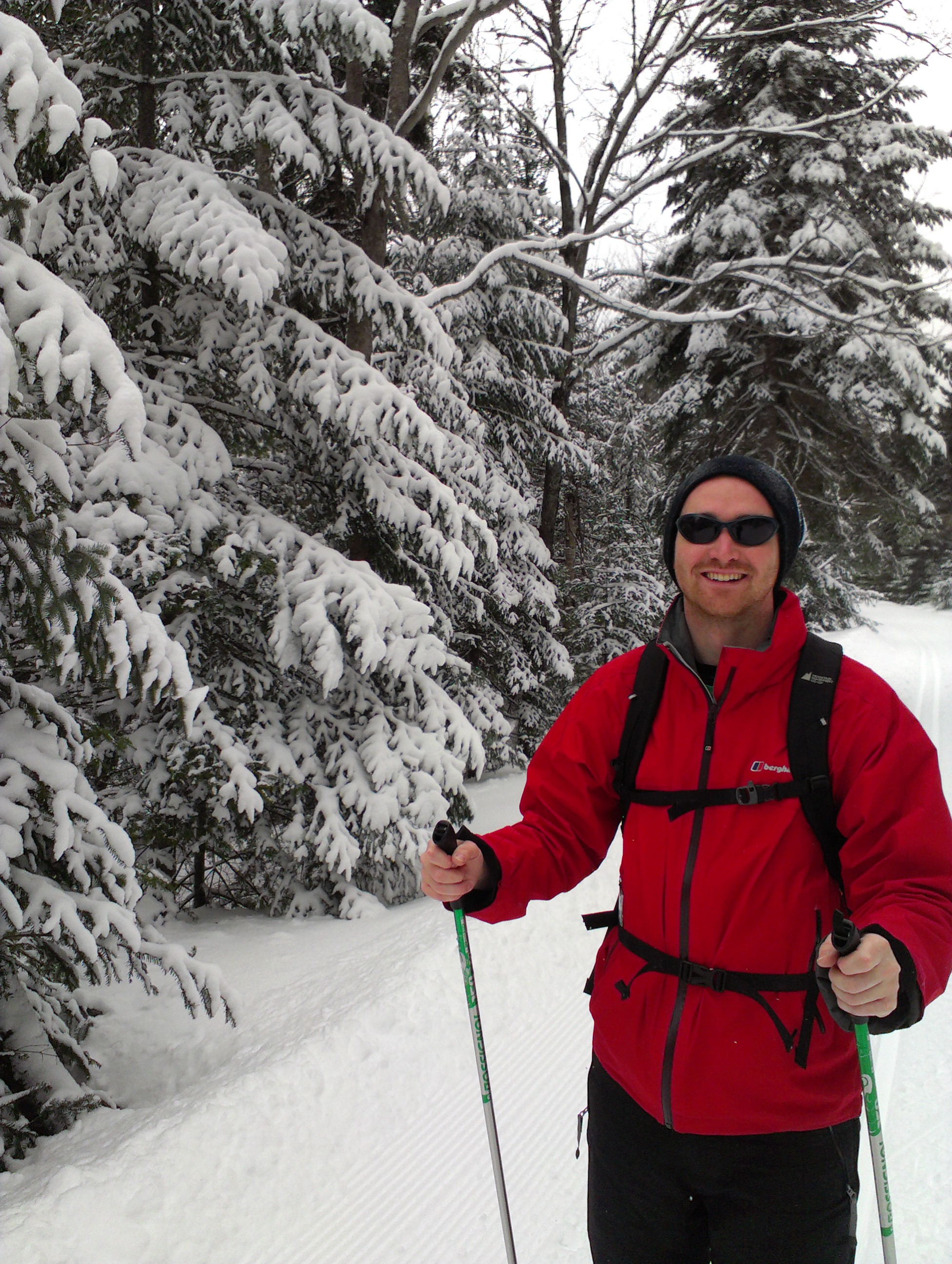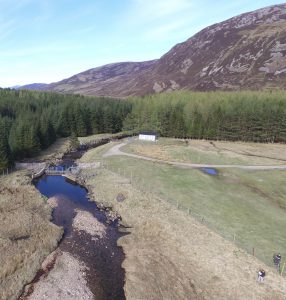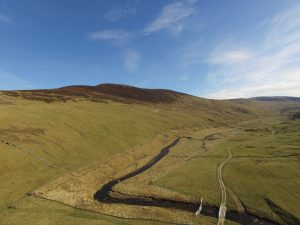
May 16, 2019, by lzzeb
Looking back (and forward) on my first few months in the School of Geography
A blog by Dr Stephen Dugdale
I’m Steve Dugdale, one of a handful of new Assistant Professors who have joined the School of Geography over the last 8 months or so. Before starting at Nottingham, I held research fellowships at the University of Birmingham and the University of New Brunswick (Canada). Although I’m originally from the UK, I did my PhD in Canada (at the Institut National de la Recherche Scientifique, Québec), so like a lot of academics, I’ve moved around a fair amount over the course of my career. It’s therefore great to have a permanent base back in the UK in a well-renowned School of Geography.
I’m a physical geographer, and the main focus of my research is rivers. I’m particularly interested in using cutting edge technology (think aerial photography, thermal imaging and computer models) to better understand the links between river habitats and ecosystems, river temperature dynamics, and climate change. My recent collaborations with colleagues at the University of Birmingham (https://www.birmingham.ac.uk/staff/profiles/gees/hannah-david.aspx) and Marine Scotland Science (https://www2.gov.scot/Topics/marine/science/Researchers/IainAMalcolm) have involved some really fun work flying drones around beautiful locations in Scotland to map features such as river water temperature (https://doi.org/10.1002/hyp.13395) and bankside tree shading (https://doi.org/10.1016/j.scitotenv.2019.04.229).
My day-to-day work as an Assistant Professor is split between research, teaching and administration. In terms of research, this can be anything from getting out into the field to collect primary data (this generally involves standing in rivers!), all the way through to writing computer code to process aerial images or to simulate the impacts of climate change on river flow or temperature. I also spend a lot of time writing up my results in the form of academic articles. My current teaching is predominantly at the Masters level, and I lecture on a range of courses relating to environmental management and geographical research techniques. It’s been great to get involved with these courses, as I’ve had the opportunity to share some of the experiences I gained while working in environmental consultancy (something I did before returning to academia to undertake a PhD). Although I don’t currently lecture on any undergraduate modules, I am still reasonably well involved in undergraduate teaching through my role as an undergraduate tutor and dissertation advisor. As a relatively new member of staff, I currently get off fairly lightly in terms of general administration tasks (for the moment!), but I have recently been spending time trying to set up a new high-powered computer lab in the School of Geography so that our postgraduate students can use cutting edge data analysis software in their research.
Now that teaching is almost over until the autumn, I’m beginning to plan some of my summer fieldwork. I’m hoping to get back up to Scotland to conduct some follow-up analyses to the drone data that I collected over the past 2-3 years. I’m also planning to travel to Canada at some point this summer to work with colleagues on a fascinating project looking at river temperature patterns in the Canadian arctic. I’ll then be rounding off my summer with a field trip out to Mount St Helens, Washington State, USA, to teach 15 School of Geography undergraduates taking the River Restoration and Management Field Course. I’m very excited to be spending time in such an interesting area. As a geographer, one of the real perks of the job is clearly the amazing places that we get to visit!
Recent research
Dugdale, S.J., Malcolm, I.A., & Hannah, D.M. (2019). Drone-based Structure-from-Motion provides accurate forest canopy data to assess shading effects in river temperature models. Science of The Total Environment, 678, 326-340. https://doi.org/10.1016/j.scitotenv.2019.04.229
Dugdale, S.J., Kelleher, C.A., Malcolm, I.A., Caldwell, S., & Hannah, D.M. (2019). Assessing the potential of drone-based thermal infrared imagery for quantifying river temperature heterogeneity. Hydrological Processes, 33, 1152-1163. https://doi.org/10.1002/hyp.13395
Dugdale, S.J., Allen Curry, R., St-Hilaire, A., & Andrews, S.N. (2018). Impact of Future Climate Change on Water Temperature and Thermal Habitat for Keystone Fishes in the Lower Saint John River, Canada. Water Resources Management, 32, 4853-4878. https://doi.org/10.1007/s11269-018-2057-7
No comments yet, fill out a comment to be the first



Leave a Reply